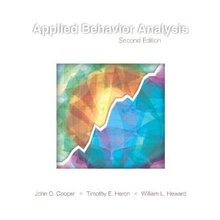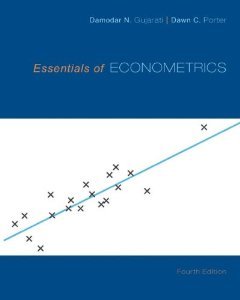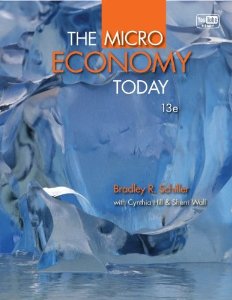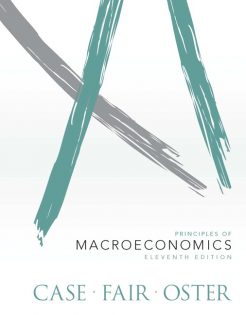Description
Applied Behavior Analysis
Applied Behavior Analysis Cooper Heron Heward
Applied Behavior Analysis Cooper Heron Heward 2nd
Applied Behavior Analysis Cooper Heron Heward 2nd Test Bank
Applied Behavior Analysis Cooper 2nd Edition Test Bank
***THIS IS NOT THE ACTUAL BOOK. YOU ARE BUYING the Test Bank in e-version of the following book***
Name: Applied Behavior Analysis
Author: Cooper Heron Heward
Edition: 2nd
ISBN-10: 0131421131
Type: Test Bank
– The test bank is what most professors use an a reference when making exams for their students, which means there’s a very high chance that you will see a very similar, if not exact the exact, question in the test!
– The file is either in pdf, doc, rtf or zipped in the package and can easily be read on PCs and Macs.
– Delivery is INSTANT. You can download the files IMMEDIATELY once payment is done.
If you have any questions, please feel free to contact us. Our response is the fastest. All questions will always be answered in 6 hours., most of the time within 30mins
We also faced similar difficulities when we were students, and we understand how you feel.
But now, with the Applied Behavior Analysis 2nd Test Bank, you will be able to
* Anticipate the type of the questions that will appear in your exam.
* Reduces the hassle and stress of your student life.
* Improve your studying and also get a better grade!
* Get prepared for examination questions.
* Can save you time and help you understand the material.
This is the quality of service we are providing and we hope to be your helper.
Delivery is in the next moment. Test Bank is accurate.
Prepare to receive your Applied Behavior Analysis 2nd Test Bank in the next moment.
ISBN-10: 0131421131
If you have any questions, or would like a receive a sample chapter before your purchase, please contact us at inquiry@testbankcorp.com
Applied Behavior Analysis
Applied Behavior Analysis Cooper Heron Heward
Applied Behavior Analysis Cooper Heron Heward 2nd
Applied Behavior Analysis Cooper Heron Heward 2nd Test Bank
Applied Behavior Analysis Cooper 2nd Edition Test Bank
Chapter 3: Test Bank
Multiple Choice
1. The progression of behavioral assessment can be conceptualized as a __________ shape
A Circular
B Funnel
C Linear
D Complex
2. One of the fundamental questions to answer before initiating behavioral assessment is:
A Who will conduct the assessment?
B Where will observations be conducted?
C What is the nature of the problem behavior?
D Who has the authority and skill to intervene with the behavior?
3. When interviewing a significant other about a client’s behavior, the behavior analyst should ask variations of all of the following types of questions except
A What
B How
C Why
D When
4. The preferred method of behavioral assessment to determine which behaviors to target for change is ____________ _____________.
A Ecological assessment
B Interviews
C Checklists
D ABC recording
5. A(n) ________ behavior is a behavior that produces indirect benefits to clients by potentially increasing opportunities for participation in other environments.
A Access
B Cusp
C Key
D Invitation
6. A behavior that produces corresponding modifications or co-variations in other adaptive, untrained behaviors is a(n) _____________________.
A Behavior cusp
B Critical behavior
C Initiating behavior
D Pivotal behavior
7. Improving academic grades is not a good target behavior because academic grades
A Are not a socially valid outcome.
B Do not specify the behaviors required to achieve the goal.
C Are too complex an outcome for behavior analysis.
D Have poorly defined performance criteria.
8. When prioritizing behaviors for change a chronic behavior _____________ when compared to a more recently acquired behavior.
A Is easier to change
B Takes precedence
C Is less important
D Requires less intervention
9. One method of priority ranking various potential target behaviors is to use a(n)
A Ranking matrix
B Standardized test
C Interviewing significant others
D Behavioral assessment
10. Explicit behavior definitions are important to the practitioner of applied behavior analysis for all of the following except:
A Ease of evaluation
B Increased likelihood of behavior change
C Accurate measurement of behavior
D Demonstration of effectiveness
11. A good behavior definition should be _____________, __________, and ____________.
A Objective, clear, complete
B Concise, specific, limited
C Functional, clear, socially valid
D Measurable, mentalistic, meaningful
True/False
1. TRUE or FALSE. An anecdotal observation is a form of direct, continuous observation of all behaviors of interest and the environmental conditions.
2. TRUE or FALSE. A topographical definition classifies behavior in terms of their common effects on the environment.
3. TRUE or FALSE. The belief that individuals with disabilities should be physically and socially integrated into society to the maximum extent possible is called habilitation.
4. TRUE or FALSE. Learning a pivotal behavior can result in modification of other behaviors that have not yet been learned.
5. TRUE or FALSE. An ecological assessment is an essential component in applied behavioral analysis.
Short Answer/Essay
1. Explain the benefits of interviews as a method for obtaining assessment information?
2. Compare the methods of standardized tests and direct observation with regard to how assessment information is obtained, the type of information gathered, and effects on the target behaviors.
3. Describe the causes of reactivity and what measures should behavior analysts undertake to minimize this effect?
4. How does the concept of habilitation help the behavior analyst determine which behavior should be targeted for behavior change?
5. Explain how the concept of normalization influences the selection of target behavior and appropriate interventions.
6. What ethical considerations should a behavior analyst consider before engaging in behavior change procedures?
7. Explain the benefits to practitioners of using observable and measurable terms to describe behaviors and intervention outcomes.
8. Discuss the importance of replacement behavior when reducing or eliminating target behavior.
9. Explain the problems with setting a general goal such as to be more successful as opposed to a more specific goal.
10. Explain the differences between a behavior cusp and a pivotal behavior.
11. Explain the benefits of including client, family, and/or staff in the goal determination process.
Chapter 4: Test Bank
Multiple Choice
1. A feature of an event that can be measured is called a(n)
a. Unit
b. Dimension
c. Quality
d. Characteristic
2. All of the following are measurable dimensional quantities except:
a. Repeatability
b. Temporal extent
c. Temporal locus
d. Topography
3. If you are interested in amount of time it takes a student to begin a task after the teacher has given an instruction you would measure _________________.
a. Response latency
b. Interresponse time
c. Trials-to-criterion
d. Duration
4. The force or intensity of a behavioral response is called
a. Topography
b. Magnitude
c. Strength
d. Power
5. The procedure of observing and recording behavior during intervals or at specific moments in time is called ___________.
a. Time sampling
b. Temporal extent
c. Celeration
d. Measurement artifact
6. A procedure that can be used to measure a continuous behavior such as academic engagement is _____________________.
a. Event
b. Whole interval
c. Permanent product
d. Response latency
7. All of the following behaviors could be assessed using natural permanent product measurement except:
a. Test scores
b. Washing dishes
c. Raising hand in class
d. Picking up garbage
8. Permanent product measurement may be more accurate, complete, and continuous for all of the following reasons except:
a. The observer can take their time
b. The behavior definitions are more precise
c. The observer can review the product more than once
d. Measurement can be conducted when there are no distractions
9. A procedure that allows for the simultaneously recording of multiple behaviors across multiple dimensions is called ______________.
a. Whole interval
b. Event
c. Momentary time sampling
d. Computer-assisted
10. A teacher is interested in measuring the engagement of groups of students at certain times of the day. An appropriate measurement procedure for this would be
a. Momentary time sampling
b. Permanent product
c. Planned activity check
d. Event
11. _________________ measurement facilitates data collection for interobserver agreement and treatment integrity.
a. Measurement artifact
b. Permanent product
c. Direct observation
d. Time sampling
True/False
1. Measurement is the process of applying qualitative labels to events.
2. The number of response opportunities needed to achieve a predetermined level of performance is called trials-to-criterion.
3. A feature of data that appears to exist because of the way the data is measured or examined is called an artifact.
4. The amount of time that elapses between two consecutive instances of a response class is called response latency.







Reviews
There are no reviews yet.